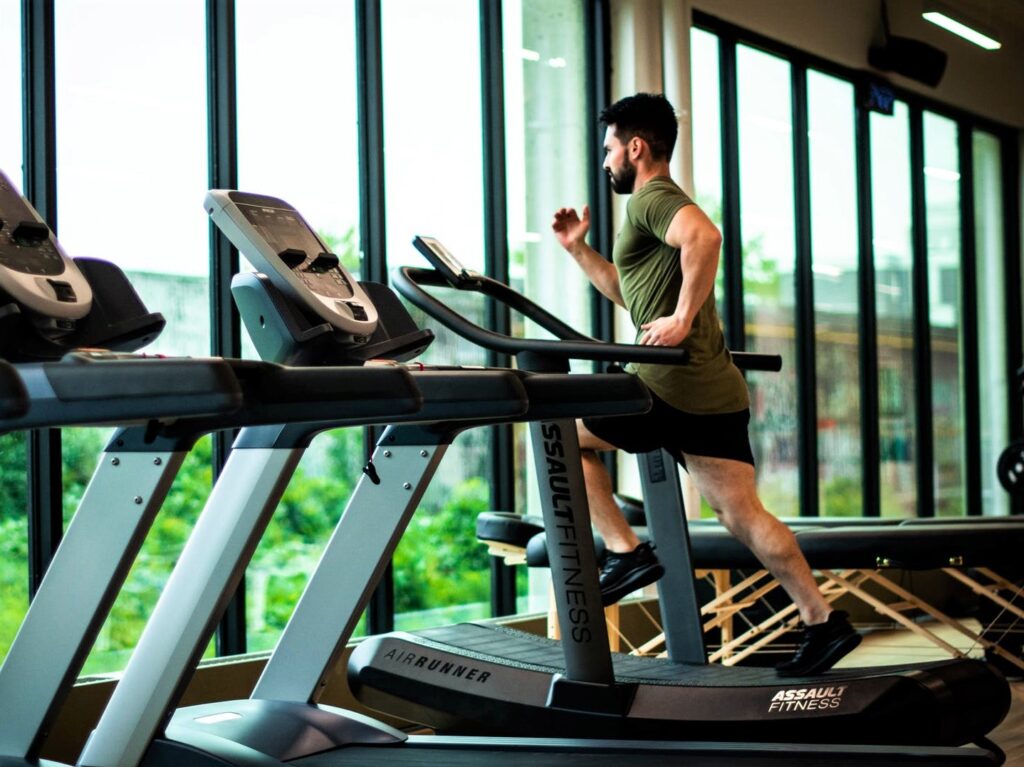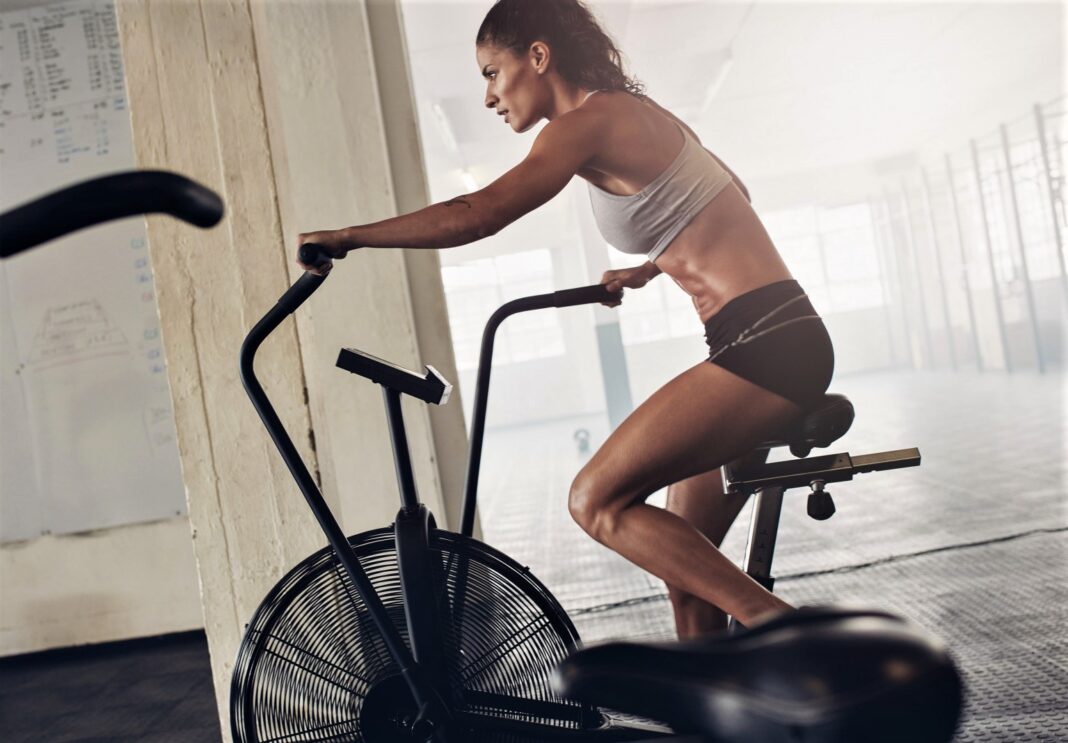A HIIT workout is briefer than continuous, lower intensity cardio, but is it better? How does high-intensity interval training work, and how can you best incorporate HIIT into your training? Let’s explore cardio intervals in your ultimate HIIT workout guide.
WHAT IS HIIT?
Pronounced “hit,” HIIT is a style of cardio. It stands for high-intensity interval training. Though it’s risen in popularity this century, HIIT has actually been around, under various names, since at least the 1930s. The key is the intervals. If you’ve played organized basketball, American football, or soccer, you probably ran wind sprints, which alternate periods of sprinting with periods of walking or standing. Wind sprints are a form of high-intensity interval training. Whether performed on a track, in a pool, or on a cardio machine, HIIT prescribes a back-and-forth between high-intensity work and low-intensity work.
HIIT WORKOUT STUDIES
There are two results to look at when evaluating HIIT versus MICT (moderate-intensity continuous training, i.e., a longer slower cardio workout). The first is its enhancement of your cardiovascular system and physical ability (endurance, speed, strength). A review of studies (1) concluded: “For years continuous aerobic exercise has been the chosen method to achieve these goals. However, research shows that HIIT leads to similar and in some cases better improvements in shorter periods of time with some physiological markers.”

The other HIIT result is the burning of calories and/or bodyfat versus MICT. A review of studies (2) with overweight individuals found: “HIIT and MICT show similar effectiveness across all body composition measures suggesting that HIIT may be a time-efficient component of weight management programs.”
HIIT was just as effective (and sometimes more effective) than MICT at reducing bodyfat in about 40% less time. To put it another way, in the same time periods, it’s about 60% more effective! A more recent review of studies (3) found that the metabolic rates of those who performed HIIT were greater, longer than those who did MICT. One study demonstrated that subjects who performed HIIT burned roughly 10% more calories in the 24 hours post-workout when compared to those who did cardio at a steady pace. Let’s look at one more review of studies (4), this one examining a whopping 41 different HITT studies. The conclusion: “Interval training and [MICT] both reduce bodyfat percentage. Interval training provided 28.5% greater reductions in total absolute fat mass than [MICT].”
Our conclusion: HIIT it!
HOW TO BEST DO A HIIT WORKOUT
Let’s break down how to do HIIT. There will be a math, so open a calculator app.
1. Determine your maximum heart rate by subtracting your age from 220. So, if you’re 25, your MHR is 195.
2. High-intensity intervals should elevate your heartrate to 80-90% of your MHR. (By contrast, MICT workouts typically raise your heartrate to 55-70% of your MHR.) So that same 25-year-old should aim for 156-176 beats per minute.
3. During the lower-intensity intervals, your heartrate should top no more than 60% of your MHR. Therefore, a 25-year-old should be at 117 or less.
4. HIIT dovetails perfectly with wearable technology like Fitbit, which make it easy to moderate your heart and time your intervals. However, with experience you should be able to feel about how much exertion to do in both the high- and low-intensity intervals, whether or not you double-check.
5. If this is your first time doing HIIT, begin with a 1:2 ratio of high- to low-intensity, 20 seconds of high alternated with 40 seconds of low for 8-10 co-intervals (8-10 minutes total).
6. Over time, change the ratio. Gradually increase the length of the high-intensity intervals and decrease the lengths of the low-intensity intervals. Never rest between intervals. The low-intensity is your “rest” before another interval of high-intensity.
7. You want to get to 40 seconds of high-intensity alternated with 20 seconds of low-intensity. If you’re already fit enough, start with 30/30 or even 40/20. Getting to a 2:1 ratio of high to low is dependent on your fitness levels, how hard you push both intervals, and how many intervals you do.
8. To boost fat-torching, you can lengthen both intervals to 60/30 and you can add co-intervals, going up to 20 (20 minutes total at 40/20). For most 12-15 co-intervals of 40/20 is the HITT sweet spot. Aim for that.
BEST HIIT EXERCISES
When it comes to which cardio exercise to do, select something strenuous enough to elevate your heartrate sufficiently. That probably eliminates the recumbent bike.
MACHINES
Good cardio machines for this are the “hard” ones—the stepmill, the elliptical, the rower, and stepper—but a treadmill or stationary bike will work great if you push your high-intensity pace fast enough. You may want to combine two machines. For example, do your high-intensity intervals vigorously climbing a stepmill and your low-intensity intervals casually strolling on the treadmill next to it. Just make sure you can transition rapidly back and forth between the two.

CALISTHENICS
Outdoors, the aforementioned wind sprints are a great option. (Stairs work for beginners or those in poor shape, but they’re a bad option for 2:1 HIIT because it takes too long to walk down after running up.) And at home or in a hotel room, you can do burpees or rope jumping. Try alternating 10 burpees with 20-30 seconds of shadow boxing and build up to 10 sets of each.
HIIT IN A LONGER WORKOUT
HIIT sessions are short. They typically clock in at 10-15 minutes. This is an advantage, but not always. Some of us use cardio to clear our head with an hour-long morning jog or to wind down with a 40-minute podcast riding a stationary bike after hoisting heavy weights. If you choose to do longer, less-intense cardio, you can still incorporate some higher-intensity work. For example, sprint 200 yards a few times during that jog, and peddle as fast as you can for 40 seconds a few times during that stationary bike ride. Intensity has been proven to boost fat-burning and cardio-vascular health, so, whatever sort of cardio you do, make certain you crank up the pace at least some of the time.
HIIT WORKOUT TIPS
Do not rest until the HIIT session is complete. The low-intensity intervals are your “rest.”
Depending on your fitness goals, do HIIT two to seven days per week.
If you do cardio as part of a workout in which you also lift weights, schedule HIIT last.
Alternately, do HIIT first thing in the morning on an empty stomach or after drinking 30 g whey protein. This is called fasted cardio.
Outside of the gym, wind sprints, rope-jumping, and burpees are three great choices, and they making doing HIIT first thing in the morning an easier option.
FURTHER READING
Low-Intensity High-Impact Training: Ultimate Guide
















































